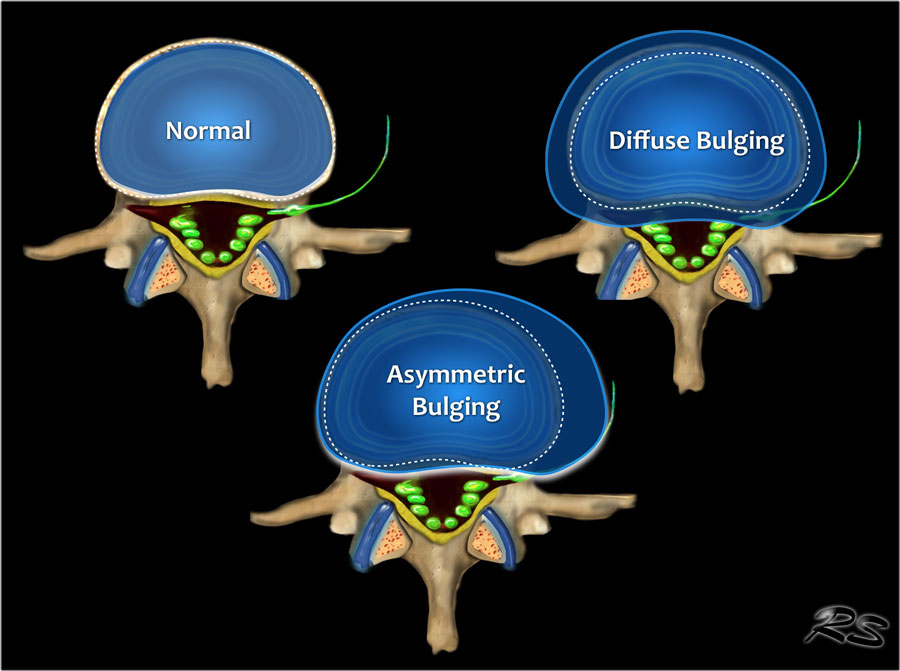
Herniated disc (cervical, thoracic, lumbar). 1,790 bulging disc stock photos, vectors, and illustrations are available royalty-free. It is sometimes called a bulging, protruding, or ruptured disk. herniated disc: What's the difference? (2018). A herniated disk is a condition that can occur anywhere along the spine, but most often occurs in the lower back. Still, Googe said, people 'could have a bulging disc and not even know it because they have no symptoms'. 'It can make people want to lay in bed while the disc heals'. were most highly associated with end - plate irregularities and disc bulging. You can learn more about how we ensure our content is accurate and current by reading our editorial policy. Herniated discs 'can be pretty painful', said Jason Koh, DO, board-certified physiatrist and triage physician at the Spine Health Center at MemorialCare Orange Coast Medical Center. Or is the clinical picture complex, for example, in a situation in. We link primary sources - including studies, scientific references, and statistics - within each article and also list them in the resources section at the bottom of our articles. Medical News Today has strict sourcing guidelines and draws only from peer-reviewed studies, academic research institutions, and medical journals and associations. Sometimes, the outer layer of the disk breaks down and ruptures, and a gel-like center is pushed out through a tear in the disk’s exterior wall. Most bulging disks occur at the bottom of the lumbar spine. Disc protrusions (often called herniated, bulging or. Expansile lyticlesion affecting posterior elements of thoracic spine. When too much pressure is placed on the disc, it bulges. periosteal reaction 66-75 are monostotic Paget disease Picture frame. When the disk bulges, it may compress or make contact with a nerve and trigger pain. Intervertebral discs are spongy cushions located between the vertebrae (bones) of the spine. The spinal cord in this area typically gets compressed due to bulging or herniated discs, bone spurs, or spinal trauma. A spinal disc has a soft, jellylike center (nucleus) encased in a tougher, rubbery exterior (annulus). The amount of gel can also decrease with age, become compressed, and push out. 
This gel may lose its flexibility and become rigid with age. There are 24 vertebrae that make up the spine. They also act as shock absorbers to prevent damage during movement.Įach disk contains a tough outer layer with gel in the middle. Nerve compression may cause pain, numbness, or weakness in the parts of the body connected to the affected nerves. The disks provide support for the spine and allow for movement between the vertebrae and to prevent bones from rubbing against each other. Between each vertebra is soft tissue, known as a spinal disk.


Ipicture of bulging disc on spine series#
Share on Pinterest Image credit: DjelicS/Getty ImageĪ bulging disk occurs when the inner, jelly like portion of the disks between the bones in the spine bulge out through a tear in the outer (annulus) portion of the disk.Ī series of interlocking bones, called vertebrae, make up the spine.







 0 kommentar(er)
0 kommentar(er)
